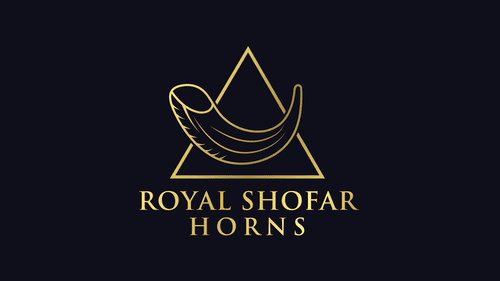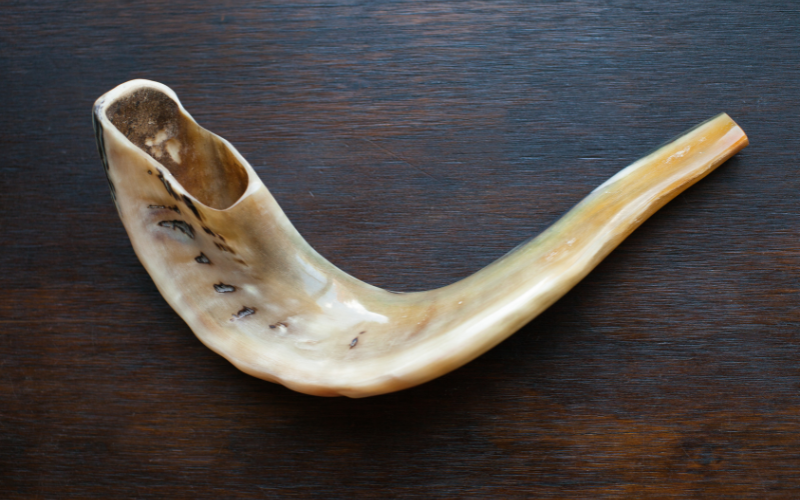מאמרים אודות שופרות
Types of trumpets: a whole world of sounds
The shofar, an ancient musical instrument that has accompanied the Jewish people for thousands of years, comes in a wide variety of shapes, sizes, and materials. Each type of shofar has unique characteristics, both in terms of its sound and its religious and historical significance.
Here are some of the most common types of shofars:
1. Ram’s Horn Shofar:
- Most common: Made from the horn of a mature male ram.
- Sound: Strong, clear, and classic.
- Advantages: Widely available, comes in various designs and styles, relatively affordable.
- Disadvantages: Less unique compared to other types.
Subtypes of Ram’s Horn Shofars:
- Ashkenazi: Rounded shape, long bore, high-pitched and sharp sound.
- Yemeni: Unprocessed, short bore, deep and warm sound.
- Moroccan: Flat, easy to carry, relatively soft sound.
- Babylonian: Thick bore, ancient and distinctive sound.
2. Oryx Shofar:
- Unique: Made from the horn of an oryx, an African antelope.
- Sound: Strong, trumpet-like, powerful.
- Advantages: Special sound, impressive appearance, unique.
- Disadvantages: Relatively expensive, less common, harder to blow.
3. Kudu Shofar:
- Prestigious: Made from the horn of a kudu, a large African antelope.
- Sound: Deep, majestic, rich.
- Advantages: Unique and powerful sound, impressive, prestigious appearance.
- Disadvantages: Very expensive, difficult to find, harder to blow.
4. Ibex Shofar:
- Special: Made from the horn of an ibex, a wild goat.
- Sound: Gentle, high-pitched, soft.
- Advantages: Unique sound, lightweight, easy to carry.
- Disadvantages: Less common, harder to find, less powerful sound.
5. Other Shofars:
- Cow Horn: Strong but flat sound, less commonly used.
- Gazelle: High-pitched and sharp sound, difficult to blow.
- Bovine: Unique and deep sound, rarely used out of respect.
Important to Note:
- Not all horns are kosher for shofar use.
- Choosing the right shofar depends on budget, personal preference, and the type of ceremony.
- It is recommended to consult with an expert before making a purchase.
Kosher Horns: According to Jewish law, not every horn is suitable for use as a shofar. Only the horn of a pure and free animal may be used as a shofar.
Choosing a Shofar:
Selecting the appropriate shofar depends on several factors, such as budget, personal preference, and the type of ceremony in which the shofar will be played. It is advisable to consult with a shofar expert before making a purchase.


 עברית
עברית

מגוון שופרות מהודרות לרכישה מהירה
Yemenite Kudu Shofar – Strictly Kosher, 110-120 cm
Yemenite Kudu Shofar – Strictly Kosher, 80-90 cm
deer shofar – size 25-30 cm
deer shofar – size 30-35 cm
deer shofar – size 50-55 cm
Shofar Oreix (Shofar Ram)
Yemenite Kudu Shofar – Strictly Kosher, 120+ cm
Yemenite Kudu Shofar – Strictly Kosher, 90-100 cm
Yemenite Kudu Shofar – Strictly Kosher, 70-80 cm
Yemenite Kudu Shofar – Strictly Kosher, 40-50 cm
deer shofar – size 35-40 cm
Yemenite Kudu Shofar – Strictly Kosher, 100-110 cm
Yemenite Kudu Shofar – Strictly Kosher, 60-70 cm
deer shofar – size 40-45 cm
Yemenite Kudu Shofar – Strictly Kosher, 50-60 cm
deer shofar – size 55-60 cm